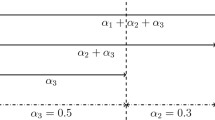Abstract
Efficient supply chain management relies on accurate demand forecasting. Typically, forecasts are required at frequent intervals for many items. Forecasting methods suitable for this application are those that can be relied upon to produce robust and accurate predictions when implemented within an automated procedure. Exponential smoothing methods are a common choice. In this empirical case study paper, we evaluate a recently proposed seasonal exponential smoothing method that has previously been considered only for forecasting daily supermarket sales. We term this method ‘total and split’ exponential smoothing, and apply it to monthly sales data from a publishing company. The resulting forecasts are compared against a variety of methods, including several available in the software currently used by the company. Our results show total and split exponential smoothing outperforming the other methods considered. The results were also impressive for a method that trims outliers and then applies simple exponential smoothing.





Similar content being viewed by others
References
Billah MB, King ML, Snyder RD and Koehler AB (2006). Exponential smoothing model selection for forecasting. Int J Forecasting 22: 239–249.
Datta S, Granger CWJ, Barari M and Gibbs T (2007). Management of supply chain: An alternative modelling technique for forecasting. J Opl Res 58: 1459–1469.
Fildes R, Hibon M, Makridakis S and Meade N (1998). Generalising about univariate forecasting methods: Further empirical evidence. Int J Forecasting 14: 339–358.
Fildes R, Nikolopoulos K, Crone SF and Syntetos AA (2008). Forecasting and operational research: A review. J Opl Res Soc 59: 1150–1172.
Gardner Jr ES (2006). Exponential smoothing: The state of the art—Part II. Int J Forecasting 22: 637–666.
Gardner Jr ES and Diaz-Saiz J (2008). Exponential smoothing in the telecommunications data. Int J Forecasting 24: 170–174.
Hyndman RJ, Koehler AB, Snyder RD and Grose S (2002). A state space framework for automatic forecasting using exponential smoothing methods. Int J Forecasting 18: 439–454.
Hyndman RJ, Koehler AB, Ord JK and Snyder RD (2008). Forecasting with Exponential Smoothing: The State Space Approach. Springer-Verlag: Berlin, Heidelberg, Germany.
Makridakis S and Hibon M (2000). The M3-competition: Results, conclusions and implications. Int J Forecasting 16: 451–476.
McCarthy TM, Davis TF, Golicic SL and Mentzer JT (2006). The evolution of sales forecasting management: A 20-year longitudinal study of forecasting practices. J Forecasting 25: 303–324.
Syntetos AA, Boylan JE and Disney SM (2009). Forecasting for inventory planning: A 50-year review. J Opl Res Soc 60: S149–S160.
Taylor JW (2003). Exponential smoothing with a damped multiplicative trend. Int J Forecasting 19: 715–725.
Taylor JW (2007). Forecasting daily supermarket sales using exponentially weighted quantile regression. Eur J Opl Res 178: 154–167.
Acknowledgements
We would like to thank the collaborating publishing company for providing the data and background information for the study. We are also grateful for the very useful comments of two anonymous referees.
Author information
Authors and Affiliations
Corresponding author
Rights and permissions
About this article
Cite this article
Taylor, J. Multi-item sales forecasting with total and split exponential smoothing. J Oper Res Soc 62, 555–563 (2011). https://doi.org/10.1057/jors.2010.95
Received:
Accepted:
Published:
Issue Date:
DOI: https://doi.org/10.1057/jors.2010.95




